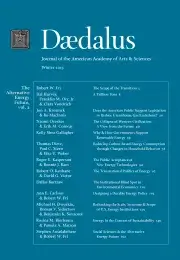Social Sciences & the Alternative Energy Future
Three decades ago the United States, Japan, and the European nations entered into a treaty to limit the use of chlorofluorocarbons (CFCs) and other ozone-depleting chemicals. Scientists at that time concluded that industrial and residential use of CFCs and similar chemicals had caused significant loss of ozone high in the atmosphere, especially over the polar regions. There was further consensus that the thinning of the stratospheric ozone layer would increase human exposure to ultraviolet rays, which can cause skin cancers and other adverse health effects, and would degrade the environment in other ways. The Montreal Protocol on Substances that Deplete the Ozone Layer was signed and put into effect in 1989, and it is expected that the damage to the ozone layer will be largely repaired by 2050.1
Worldwide cooperation can solve global environmental crises.2 The Montreal Protocol stands as a clear example of such concerted action. Yet there are notable differences between the global action required to respond to climate change and what was necessary in the case of CFCs. Looking back on the experience with CFCs and the Montreal Protocol, Nobel Prize-winning chemist Mario Molina noted that the global warming challenge is as much a matter of public policy and social science as engineering, physics, and chemistry. In fact, the science behind carbon emissions and climate change is far more certain now than the science behind CFCs and ozone depletion was in 1989.3 The vastly different political responses to these two environmental challenges can be explained by their particular root causes. On the one hand, the technologies accounting for most of the ozone-depleting chemicals were highly concentrated in a few industries, and close substitutes for CFCs existed. CFCs could thus be isolated and addressed through relatively straightforward regulatory regimes.
. . .
